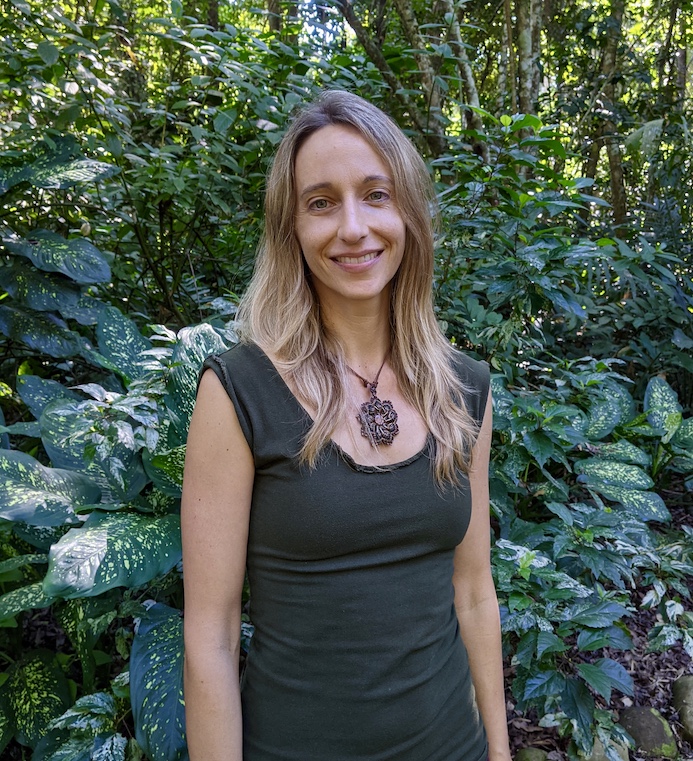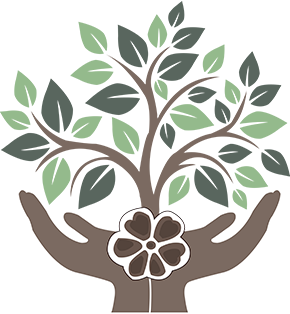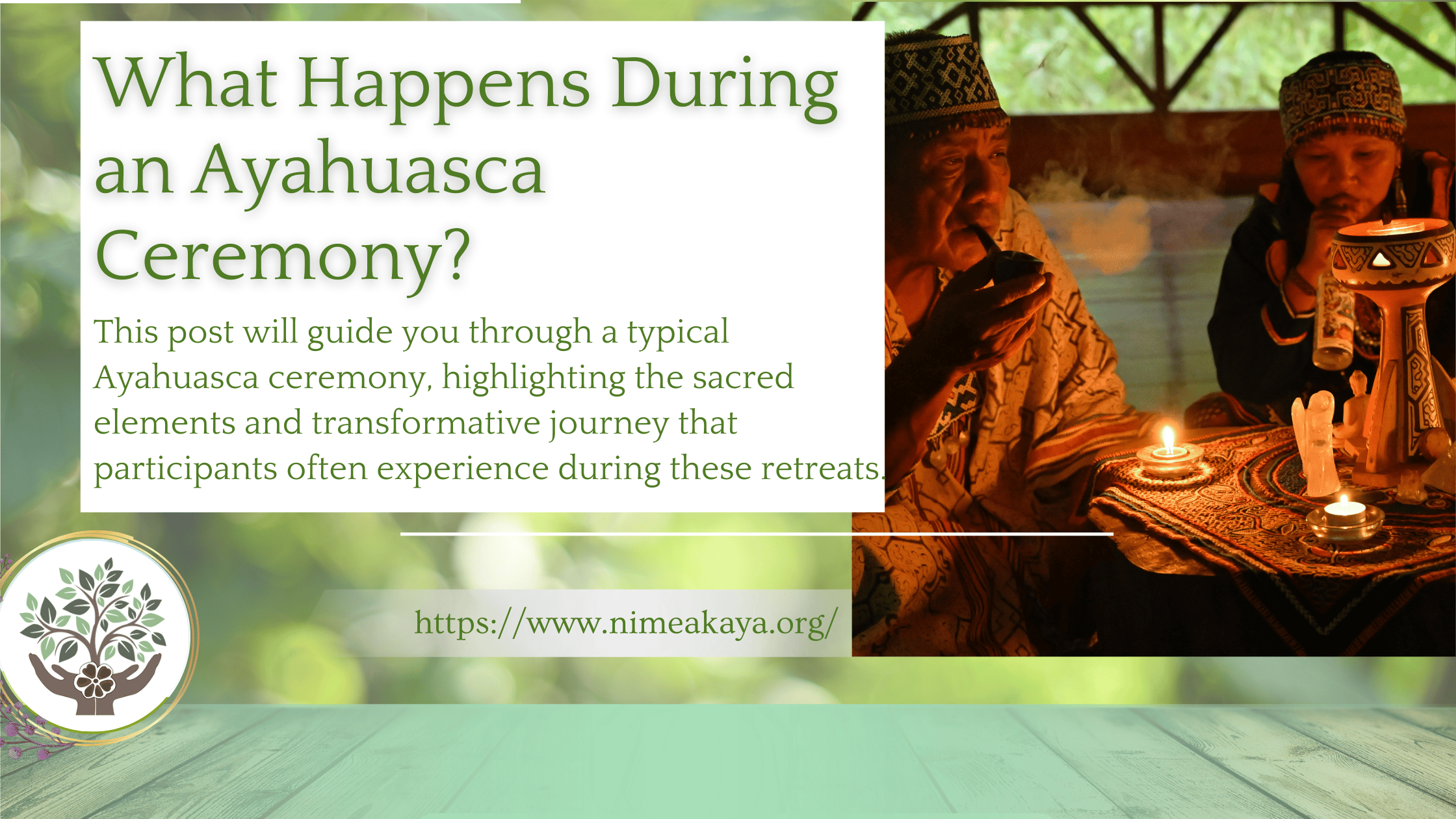What Happens During an Ayahuasca Ceremony? An Step-by-Step Overview
Ayahuasca ceremonies have gained attention worldwide for their potential to offer profound spiritual, emotional, and psychological healing. But do you know what exactly happens during an ayahuasca ceremony?
Rooted in the traditions of indigenous Amazonian tribes, these ceremonies are a deeply sacred and structured experience.
For many, the decision to participate in an Ayahuasca ceremony is accompanied by curiosity about what unfolds during the ritual.
If you’re considering participating in one, you might wonder what actually happens during the ritual. This post will walk you through a typical Ayahuasca ceremony, giving you insight into the sacred elements and the transformative journey many participants go through during such retreats.
What is an Ayahuasca Trip like? Experience it in these 6 Steps
Step 1: Preparation Before the Ceremony
The day of the Ayahuasca ceremony often begins with preparation, both physical and mental. Participants may be asked to fast or consume a light meal earlier in the day to ensure the body is receptive to the medicine.
This fasting also reduces the likelihood of nausea, a common side effect of Ayahuasca. Many retreat centers provide guidance on entering the ceremony with a calm and focused mindset, often recommending light meditation, journaling, or setting intentions.
Participants are usually encouraged to reflect on their intentions for the ceremony. These intentions serve as a guide for the experience, helping individuals align their focus and open themselves to the teachings of the medicine. Common intentions include seeking clarity, healing trauma and emotional wounds, or exploring personal growth.
Step 2: The Sacred Space and Rituals
Ayahuasca ceremonies typically take place in a ceremonial space, often referred to as a “maloca” in traditional settings. The space is prepared with care under supervision of experienced Shamans, incorporating elements that honor the spiritual significance of the ritual, such as an altar with sacred objects, candles, or traditional artwork.
Participants are assigned a personal space, often consisting of a mattress, blanket, and bucket for purging.
The ceremony begins with the shaman or facilitator performing rituals to bless the space and invoke spiritual protection. These rituals may include chanting, prayers, and the use of sacred tools such as smudging herbs, sacred tobacco, feathers, or musical instruments.
The purpose of these rituals is to create a safe, sacred, and harmonious environment for the participants during the retreat ceremony.
Step 3: Drinking the Ayahuasca Brew
Once the sacred space has been prepared, the shaman invites participants to consume the Ayahuasca brew.
This psychedelic brew, made from the Banisteriopsis caapi vine and Psychotria viridis leaves, is served in small cups.
Participants take turns receiving their dose, and are encouraged to take a moment of silent reflection before drinking the Ayahuasca.
The taste of Ayahuasca is often described as bitter and earthy, and participants may need a moment to adjust after drinking it.
Once everyone has consumed their dose, participants may lie down or sit in meditation to wait for the effects to begin. The onset of Ayahuasca’s effects can take anywhere from 20 to 90 minutes.
Step 4: The Journey Begins: Visions and Purging
As the Ayahuasca takes effect, participants may begin to experience altered states of consciousness.
This can manifest in various ways, including vivid visual imagery, deep emotional insights, or heightened sensory perception.
The journey is deeply personal, and no two participants’ experiences are the same.
Purging is a common physical sign, also assumed integral part of the Ayahuasca experience. This can involve vomiting, crying, sweating, shaking or other forms of release.
While purging may seem unpleasant, it is considered a cleansing process, both physically and energetically.
Participants are encouraged to surrender to the process, trusting that the medicine is helping them release what no longer serves them.
Step 5: Navigating the Experience
Ayahuasca ceremonies often bring up a mix of emotions, including joy, fear, sadness, or awe. Participants are encouraged to remain present and open, even during challenging moments.
Surrendering to the experience and trusting in the medicine’s wisdom are key to navigating the journey.
Some participants may encounter profound insights, memories, or spiritual encounters during their visions. Others may simply feel a deep sense of peace or connection. Regardless of the content, every experience is considered valuable and transformative.
Step 6: Closing the Ceremony
As the effects of the Ayahuasca begin to wane, the shaman gradually transitions the ceremony toward closure. This may involve a final round of icaros, arkanas or prayers to honor the participants’ journeys and give thanks to the spirit of the medicine.
Post-Ceremony Integration
The hours and days following an Ayahuasca ceremony are a critical time for integration. Participants are encouraged to rest, reflect, and process their experiences.
Journaling, meditation, or quiet time in nature can help deepen the understanding of insights gained during the ceremony.
Some retreat centers offer integration support, such as group discussions or one-on-one counselling sessions. This support helps participants make sense of their experiences and apply the lessons to their daily lives.
It is also recommended to continue avoiding substances or heavy foods to allow the body and mind to remain in a receptive state.
Guidance from the Shaman
Throughout the ceremony, the shaman plays a crucial role in guiding the participants. Using traditional songs known as “icaros,” the shaman creates a sonic landscape that supports the journey.
Icaros are medicine songs that carry the spirit of the Ayahuasca and other master plants, helping to guide participants through their visions and emotions.
The shaman may also use instruments such as drums, rattles, or flutes to enhance the ceremony’s energy.
In some cases, the shaman may perform individual healing work for participants, using energy clearing techniques or offering words of reassurance.
Precautions for Ayahuasca Ceremony
Taking precautions is vital to ensure a safe and meaningful Ayahuasca experience. Participants should disclose their medical history to facilitators, including any medications or mental health conditions, as some substances can interact dangerously with Ayahuasca.
It is also essential to follow dietary restrictions and abstain from alcohol, drugs, and certain foods that may affect the ceremony’s outcome. Trusting experienced shamans and adhering to their guidance can further enhance safety and spiritual depth.
Conclusion
An Ayahuasca ceremony is believed to offer a profound and sacred journey that unfolds in a carefully structured sequence.
From the initial preparation to the post-ceremony integration, every step is designed to support participants in their healing and transformation.
By understanding what happens during an Ayahuasca ceremony, individuals can approach the experience with greater awareness and readiness, ensuring they receive the full benefit of this ancient and powerful medicine.
For those called to this path, an Ayahuasca ceremony has the potential to be a life-changing encounter with one’s inner self and the greater mysteries of existence.
About the Author – Jill LEvers

Jill Levers has been passionately writing about Ayahuasca for nearly 20 years, sharing her insights and experiences to inspire and educate others about its profound healing potential. Ayahuasca has played a transformative and central role in her life and work. Her first encounter with sacred medicine in Peru in 2007 marked a profound turning point in her spiritual journey. During her second ceremony, Jill felt a deep calling from Ayahuasca to dedicate her life to helping others heal and transform.
This experience inspired her to co-found the Tierra Vida Healing Center in 2008, which later evolved into the Nimea Kaya Healing Center in 2013. For over 17 years, Jill has served as a bridge between the Western world and the traditional Shipibo culture, organizing Ayahuasca retreats, assisting guests with integration, and supporting individuals on their paths to personal growth and healing.

